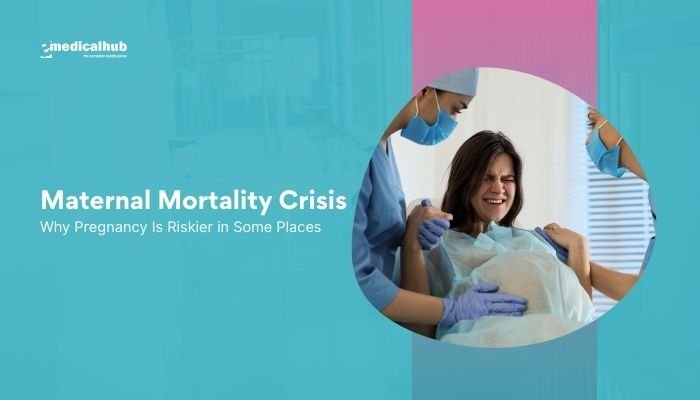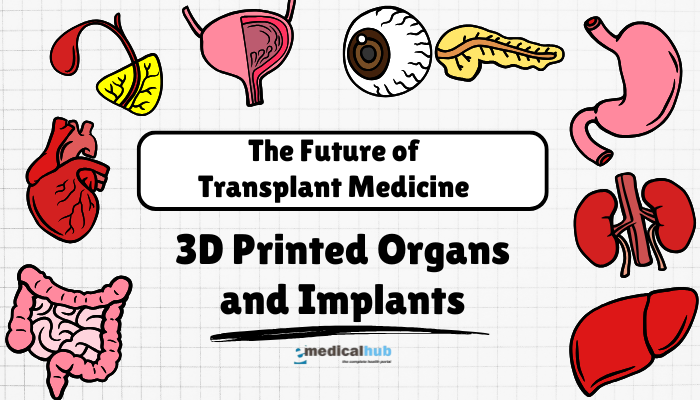Introduction
Maternal mortality—defined as the death of a woman during pregnancy or within a specified period after giving birth—remains a pressing global health concern. Though medical advances have lowered maternal deaths in some regions, substantial disparities persist.
In certain places, pregnancy poses markedly higher risks due to inadequate healthcare systems, socio-economic inequalities, limited access to skilled birth attendants, and gaps in emergency obstetric care.
The World Health Organization (WHO) estimates that nearly 810 women die each day from preventable causes related to pregnancy and childbirth, underscoring the urgency to understand and tackle the crisis.
This article explores the multifaceted factors contributing to maternal mortality, focusing on why pregnancy is particularly hazardous in some communities. It also reviews global trends, key drivers of maternal mortality, socio-economic and infrastructural barriers, and strategies that have shown promise in reducing maternal deaths.
By grasping the complexities behind maternal mortality, policymakers, healthcare professionals, and local advocates can better prioritize actions that save the lives of pregnant individuals worldwide.
Defining Maternal Mortality and Global Trends
The Maternal Mortality Ratio (MMR)
- Definition: Maternal mortality ratio (MMR) measures the number of maternal deaths per 100,000 live births. A maternal death is “the death of a woman while pregnant or within 42 days of the termination of pregnancy, from any cause related to or aggravated by the pregnancy or its management.”
- Global Averages: According to the WHO, the global MMR was around 152 per 100,000 live births in 2020, although regional variations are profound.
High-Burden Regions
- Sub-Saharan Africa: This region alone accounts for roughly two-thirds of global maternal deaths. Multiple countries have MMRs exceeding 500 deaths per 100,000 live births.
- Southern Asia: Though improvements have been made, maternal mortality still poses a major challenge in certain areas.
- Disparities in High-Income Nations: Even in developed countries (e.g., the United States), maternal mortality rates show surprising upward trends, especially among marginalized groups and rural populations.
Progress and Setbacks
- Millennium Development Goals (MDGs): From 2000 to 2015, many countries strove to reduce MMR by 75%. Some made significant progress, but globally the target was not fully met.
- Sustainable Development Goals (SDGs): The new aim is to reduce the global MMR to below 70 per 100,000 live births by 2030. Meeting this requires concerted effort in resource distribution, capacity building, and social change.
Key Takeaway: The maternal mortality crisis remains a critical health issue. Despite improvements, wide gaps persist, influenced by context-specific factors such as health system capacity, policy commitment, and social determinants of health.
Causes of Maternal Mortality
Direct Medical Causes
- Hemorrhage: Bleeding, especially postpartum hemorrhage, is a leading cause globally. It can kill within hours if not treated swiftly.
- Hypertensive Disorders (Preeclampsia and Eclampsia): High blood pressure in pregnancy can escalate to seizures (eclampsia) if not identified and managed.
- Sepsis or Infection: Poor hygiene, delayed treatment of complications, and lack of antibiotics can result in life-threatening infections.
- Unsafe Abortion: In regions where abortion is restricted or performed in unsafe conditions, maternal morbidity and mortality increase.
- Obstructed Labor: Without timely surgical intervention, prolonged labor can cause uterine rupture or severe distress.
Indirect Causes
- HIV/AIDS and Other Chronic Diseases: Conditions such as HIV, cardiac disorders, or diabetes can worsen during pregnancy.
- Malaria: In endemic areas, pregnant individuals may be more susceptible to complications.
- Anemia: Chronic malnutrition and repeated pregnancies can lead to severe anemia, raising the risk of hemorrhage or infection.
The “Three Delays” Model
To explain maternal deaths, experts use the “three delays” concept:
- Delay in Deciding to Seek Care: Often caused by low awareness, cultural norms, or underestimation of danger signs.
- Delay in Reaching Care: Geography, poor transport, or cost barriers can obstruct prompt help.
- Delay in Receiving Adequate Care: Even upon arrival, a facility might lack skilled staff, blood supplies, or necessary drugs, resulting in fatal delays.
Why Pregnancy Is Riskier in Some Places
Healthcare Infrastructure Gaps
- Inadequate Facilities: Many rural health centers have neither electricity nor basic emergency obstetric care. Women in these areas may have to travel several hours for a skilled provider.
- Lack of Skilled Attendants: The shortage of qualified midwives or obstetricians means complications go unrecognized or untreated.
- Equipment and Supplies: From blood for transfusions to surgical instruments, shortfalls in essential resources heighten risk.
Socio-Economic Inequalities
- Poverty: Limits access to antenatal visits, hospital births, or treatments for complications. Families must often choose between daily essentials and medical costs.
- Education Levels: Women with limited education may not identify danger signs or know their rights regarding maternal care.
- Marginalized Groups: Ethnic minorities, migrants, or those in conflict zones face additional hurdles, including discrimination in healthcare settings.
Cultural and Gender Norms
- Early Marriages and Repeated Pregnancies: Young girls in forced or early marriages are more prone to complications. Frequent pregnancies in quick succession also strain health.
- Decision-Making Power: Women with restricted autonomy may be unable to access care or decide on family planning. Male-dominated households sometimes hamper timely medical treatment.
- Traditional Beliefs: In certain societies, childbirth at home with untrained birth attendants is the norm, leading to higher complication rates.
Geography and Infrastructure
- Remote Communities: Geographic isolation means emergency services or ambulances cannot reach patients swiftly.
- Transport Challenges: Lack of paved roads, absence of public transport, or high cost keep women from specialized facilities in time.
- Disaster-Prone Areas: Floods, conflicts, or natural calamities disrupt maternity care, cutting off entire regions for extended periods.
Political Will and Governance
- Health Budget Priorities: Limited public health funding or misallocation might ignore maternal services in favor of other priorities.
- Corruption or Bureaucratic Hurdles: Money for maternal health programs can be siphoned or stuck in red tape.
- Continuity of Care: Frequent turnover in government or healthcare leadership can undermine the sustainability of maternal health initiatives.
Notable Disparities: Case Studies
Sub-Saharan Africa
- Statistical Reality: Over half of global maternal deaths occur here.
- Factors: High fertility rates, insufficient skilled birth attendants, prevalent infectious diseases, poor roads, and limited emergency transport.
- Progress: Countries like Rwanda, Ethiopia, and Malawi have reduced MMR through community health worker programs, but challenges remain in remote districts.
South Asia
- Cultural Influences: Patriarchal norms, early marriage, and constraints on women’s mobility.
- Positive Trends: India’s institutional delivery push (Janani Suraksha Yojana) increased facility births and somewhat lowered MMR, yet quality of care remains uneven.
- High-Risk Areas: Conflict zones or mountainous regions in Afghanistan, Pakistan, or Nepal see high maternal mortality as well.
Disparities in High-Income Countries (The United States Example)
- Unexpected Rise: The US has a higher MMR than many other developed nations, with a rate around 24 deaths per 100,000 live births in recent data (varying by source).
- Racial Gaps: Black women face about 2–3 times higher risk than white women, reflecting systemic racism, unequal access to quality care, and implicit bias in healthcare.
- Rural vs. Urban Divide: Closure of rural hospitals and shortage of obstetric units contribute to postpartum complications not being managed promptly.
Structural Determinants and Social Factors
Education and Empowerment
- Quality Education: Women who complete secondary school are more likely to access prenatal care and skilled delivery.
- Economic Opportunities: Income generation allows pregnant individuals to afford better nutrition, transport, and healthcare fees.
- Decision-Making: Empowered women can advocate for timely medical help. This includes the ability to adopt family planning to space births effectively.
Family Planning and Contraception
- Unmet Need: Around 218 million women in low- and middle-income countries cannot access modern contraception. Unplanned pregnancies raise the risk of maternal death.
- Birth Spacing: Closely spaced pregnancies amplify risks, particularly if the mother’s body lacks time to recover.
- Safe Abortion Services: Where abortion is restricted or clandestine, maternal mortality from unsafe procedures is higher.
Nutrition and Food Security
- Malnutrition: Increases vulnerability to anemia, infection, and pregnancy complications.
- Micronutrient Deficiencies: Folate, iron, and calcium are critical in preventing neural tube defects, severe anemia, and pre-eclampsia.
- Adolescent Pregnancies: Teenage mothers face higher risk if undernourished, compounding obstetric complications.
Infrastructure and Communication
- Emergency Transportation: Ambulances, community transport networks, or telemedicine can expedite life-saving interventions.
- Referral Systems: Quick communication between rural clinics and advanced centers is vital if complications arise.
- Water, Sanitation, and Hygiene (WASH): Reduces infection risk in childbirth settings.
Key Interventions to Reduce Maternal Mortality
Skilled Birth Attendance
- Trained Midwives: Midwives who recognize danger signs and take quick action can prevent or manage postpartum hemorrhage, obstructed labor, or sepsis.
- Ongoing Training: Continuous professional development ensures these professionals maintain up-to-date skills.
- Community Health Workers: In remote areas, they track pregnancies, facilitate prenatal checkups, or arrange referrals.
Emergency Obstetric Care (EmOC)
- Basic EmOC: Facilities that can manage normal deliveries, suture tears, and handle postpartum hemorrhage using medications.
- Comprehensive EmOC: Involves surgical capability (e.g., cesarean sections), anesthesia, and blood transfusions.
- Blood Banks: Ensuring a reliable blood supply is crucial, especially for hemorrhage management.
Access to Family Planning
- Contraceptive Access: Minimizes unplanned or closely spaced pregnancies.
- Postpartum Family Planning: Encouraging contraceptive use soon after delivery or abortion helps to space births.
- Youth-Focused Services: Adolescent-friendly clinics reduce early and unplanned teen pregnancies.
Maternal Nutrition
- Micronutrient Supplementation: Iron-folic acid tablets, calcium, vitamin A in deficiency-prone areas.
- Feeding Practices: Encouraging balanced diets, protein sources, and fruit/vegetables.
- Addressing Anemia: Effective screening and treatment programs during antenatal visits.
Health System Strengthening
- Universal Health Coverage (UHC): Reduces out-of-pocket costs that deter seeking skilled care.
- Integrated Care: Merging maternal health with HIV, TB, and malaria programs.
- Data and Surveillance: Tracking maternal deaths through robust civil registration or near-miss audits to identify systemic weaknesses.
Reducing Socio-cultural Barriers
- Community Mobilization: Health education, men’s involvement, and local leadership can shift norms around childbirth location and timing of care.
- Legal Protections: Empowering women via legislation that ensures maternity leave, protects maternal health rights, and addresses harmful practices like child marriage.
Successful Models and Lessons Learned
Rwanda’s Rapid Decline in MMR
- Government Commitment: Heavily invested in community-based health insurance and training.
- Community Health Workers: Each village has volunteer workers tasked with identifying pregnancies early and guiding women to clinics.
- Performance-Based Financing: Incentives for health staff improved quality and accountability.
Sri Lanka’s Long-Term Strategy
- Free Maternal Care: Government policy ensured accessible healthcare at the local level.
- Midwife-Driven System: Skilled midwives in rural communities contributed to near-universal skilled birth attendance.
- Continuous Data Monitoring: Performance audits to rectify issues rapidly.
Brazil’s Family Health Program
- Primary Health Outreach: Family health teams visiting homes, focusing on antenatal care.
- Conditional Cash Transfers (Bolsa Família): Mothers receive financial support if they attend regular prenatal checkups, improving maternal health behaviors.
Key Point: Different countries have succeeded with diverse approaches, but commonalities include political commitment, robust community-level care, and prioritizing maternal health in national policy.
Maternal Health and Pandemics/Emergencies
COVID-19 Example
- Interrupted Services: Lockdowns, fear of infection, and resource reallocation disrupted routine prenatal and birthing services.
- Increased Home Deliveries: Some women avoided hospitals, raising the risk of unmanaged complications.
- Innovations: Telemedicine and mobile clinics emerged to maintain contact, but not all regions had the infrastructure.
Conflict and War Zones
- Damaged Facilities: Attacks on health centers or forced closures hamper maternal services.
- Displacement: Refugees often lack stable access to antenatal care or skilled attendants.
- High Mortality Risk: Without stable supply lines for medicines and emergency interventions, maternal mortality spikes.
The Role of Advocacy and Policy
International Frameworks
- WHO and UN Bodies: Provide guidelines, e.g., the WHO standards for maternal and newborn care.
- Sustainable Development Goals (SDG 3.1): Target is below 70 maternal deaths per 100,000 live births.
- Global Financing Facility (GFF): Supports countries to prioritize maternal, newborn, and child health programs.
National Policies
- Budget Allocation: Earmarking funds for improved obstetric services, training, and free maternal care can drastically lower mortality.
- Legislation: Laws around early marriage, abortion rights, or domestic violence can indirectly affect maternal health outcomes.
- Public-Private Partnerships: Collaborations between governments, nonprofits, and private companies can expand facility coverage.
Grassroots Movements
- Community Advocacy Groups: Women’s groups often advocate for local maternity waiting homes or better transport.
- Accountability: Social audits and citizen-driven scorecards can hold local health facilities to service standards.
Technology and Innovation
E-Health and Telemedicine
- Remote Consultations: Specialists can guide complicated pregnancies in remote sites.
- mHealth Apps: Track patient records, remind pregnant women of checkups, or triage risk signs.
- Data for Planning: Real-time data monitoring helps direct resources to high-risk regions.
Point-of-Care Diagnostics
- Portable Ultrasound: Trained community workers can identify high-risk pregnancies early.
- Quick Hemoglobin Tests: Rapid detection of anemia or preeclampsia signs can trigger timely interventions.
Low-Cost Innovations
- Uterine Balloon Tamponade: Simple device to stop postpartum hemorrhage in resource-limited settings.
- Solar-Powered Clinics: Provide stable electricity for night deliveries or refrigeration of medicines.
Quote: “Investing in innovative health technologies can drastically reduce maternal deaths, especially in underserved areas.”
Future Perspectives
Integrating Mental Health
- Perinatal Depression: Undiagnosed mental health issues can lead to neglect of antenatal care or postpartum complications.
- Holistic Approach: Maternity services that also screen for depression, anxiety, or gender-based violence often yield better outcomes.
Climate Change Impact
- Extreme Weather: Heat waves, floods, or drought compromise maternal nutrition, hamper transport, and damage infrastructure.
- Migration Pressures: Overcrowded shelters or informal settlements strain maternal care systems.
Gender Equality Goals
- Beyond Healthcare: Women’s literacy, labor rights, and social support networks are integral to sustaining low maternal mortality.
- Intersectionality: Addressing racism, class inequities, and marginalization ensures no group is left behind
Conclusions
Maternal mortality reveals stark inequalities in access to healthcare, socio-economic support, and fundamental human rights. While the medical causes of maternal death—like hemorrhage, sepsis, or hypertensive disorders—are largely preventable, deeper systemic issues persist, making pregnancy riskier for certain populations. The reasons vary: lack of skilled obstetric care, financial barriers, social norms restricting timely treatment, or high-level political neglect.
To overcome these challenges, concerted efforts at multiple levels are required. Health systems need stronger infrastructure and well-trained personnel. Socio-cultural change is vital—empowering women to seek help without stigma or delay. Policy reforms must ensure adequate funding and universal access to essential services, from antenatal visits to emergency obstetric care. Countries that have succeeded in lowering maternal mortality typically showcase a blend of political will, community engagement, and robust public health frameworks. Addressing maternal mortality is not solely a medical issue; it involves the entire fabric of society—education, economic empowerment, legal rights, and continuous community-led accountability.
Only through a holistic approach can the global community achieve the Sustainable Development Goal of significantly reducing maternal deaths. Ensuring a safe pregnancy is a cornerstone of upholding women’s health, dignity, and equality worldwide.
References
- World Health Organization. Trends in maternal mortality 2000 to 2017: estimates by WHO, UNICEF, UNFPA, World Bank Group and the United Nations Population Division. Geneva: WHO; 2019.
- Say L, Chou D, Gemmill A, Tuncalp Ö, Moller AB, Daniels J, et al. Global causes of maternal death: a WHO systematic analysis. Lancet Glob Health. 2014;2(6):e323-333.
- Alkema L, Chou D, Hogan D, Zhang S, Moller AB, Gemmill A, et al. Global, regional, and national levels and trends in maternal mortality between 1990 and 2015. Lancet. 2016;387(10017):462-474.
- Lawn JE, Blencowe H, Waiswa P, Amouzou A, Mathers C, Hogan D, et al. Stillbirths: rates, risk factors, and acceleration towards 2030. Lancet. 2016;387(10018):587-603.
- Kassebaum NJ, Bertozzi-Villa A, Coggeshall MS, et al. Global, regional, and national levels and causes of maternal mortality during 1990-2013. Lancet. 2014;384(9947):980-1004.
- Langer A, Meleis A, Knaul FM, et al. Women and Health: the key for sustainable development. Lancet. 2015;386(9999):1165-1210.
- Graham WJ, Woodd S, Byass P, et al. Diversity and divergence: the dynamic burden of poor maternal health. Lancet. 2016;388(10056):2164-2175.
- Miller S, Abalos E, Chamillard M, Ciapponi A, Colaci D, Diaz V, et al. Beyond too little, too late and too much, too soon: a pathway towards evidence-based, respectful maternity care worldwide. Lancet. 2016;388(10056):2176-2192.
- Tuncalp Ö, Were WM, MacLennan C, Oladapo OT, Gülmezoglu AM, Bahl R, et al. Quality of care for pregnant women and newborns: the WHO vision. BJOG. 2015;122(8):1045-1049.
- WHO. Strategies toward ending preventable maternal mortality (EPMM). Geneva: World Health Organization; 2015.
- Essendi H, Mills S, Fotso JC. Barriers to formal emergency obstetric care services’ utilization. BMC Pregnancy Childbirth. 2011;11:34.
- Ronsmans C, Graham WJ. Maternal mortality: who, when, where, and why. Lancet. 2006;368(9542):1189-1200.
- UNFPA. Maternal Health Thematic Fund: Annual Report 2020. New York: UNFPA; 2021.
- Witter S, Govender V, Ravindran TS, Yates R. Minding the gaps: health financing, universal health coverage and gender. Health Policy Plan. 2017;32(Suppl 5):v4–v12.
- Jewkes R, Kinoti SN. Preventing unsafe abortion: a neglected strategy for saving women’s lives. BMJ. 2002;324(7330):915-916.







